Abstract
I assemble stable multispecies Lotka-Volterra competition communities that differ in resident species number and average strength (and variance) of species interactions. These are then invaded with randomly constructed invaders drawn from the same distribution as the residents. The invasion success rate and the fate of the residents are determined as a function of community-and species-level properties. I show that the probability of colonization success for an invader decreases with community size and the average strength of competition (alpha). Communities composed of many strongly interacting species limit the invasion possibilities of most similar species. These communities, even for a superior invading competitor, set up a sort of "activation barrier" that repels invaders when they invade at low numbers. This "priority effect" for residents is not assumed a priori in my description for the individual population dynamics of these species; rather it emerges because species-rich and strongly interacting species sets have alternative stable states that tend to disfavor species at low densities. These models point to community-level rather than invader-level properties as the strongest determinant of differences in invasion success. The probability of extinction for a resident species increases with community size, and the probability of successful colonization by the invader decreases. Thus an equilibrium community size results wherein the probability of a resident species' extinction just balances the probability of an invader's addition. Given the distribution of alpha it is now possible to predict the equilibrium species number. The results provide a logical framework for an island-biogeographic theory in which species turnover is low even in the face of persistent invasions and for the protection of fragile native species from invading exotics.
Full text
PDF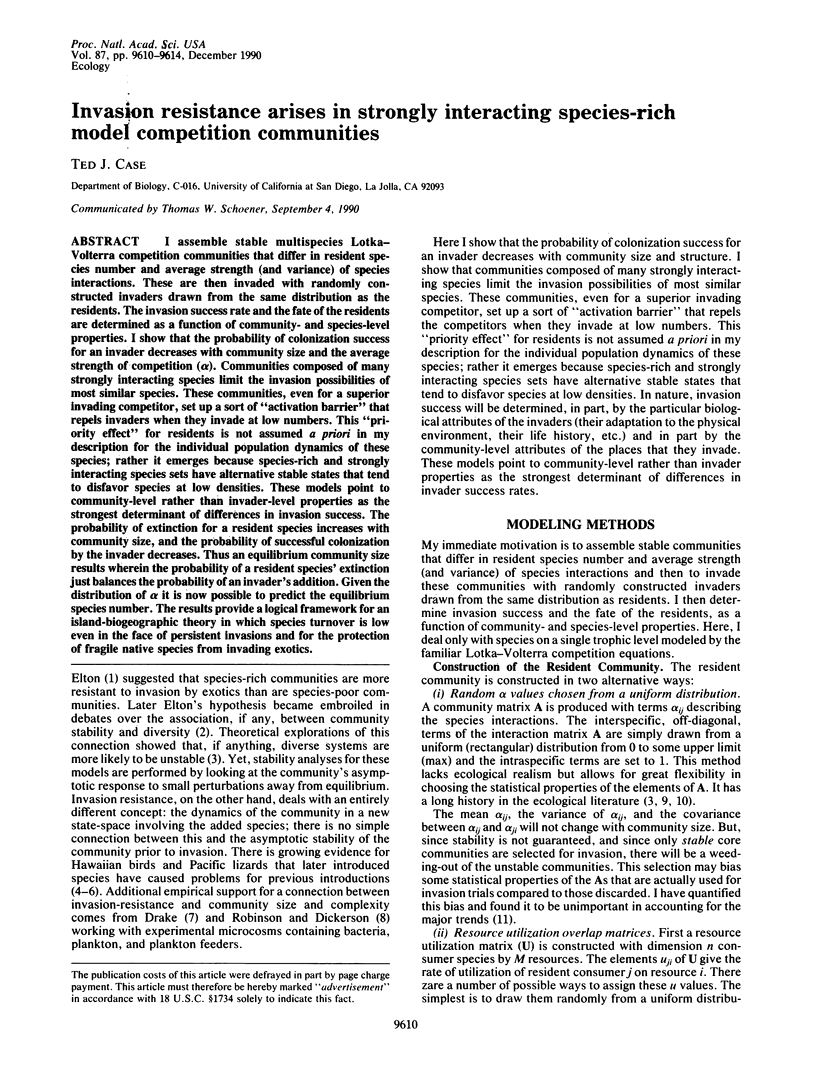
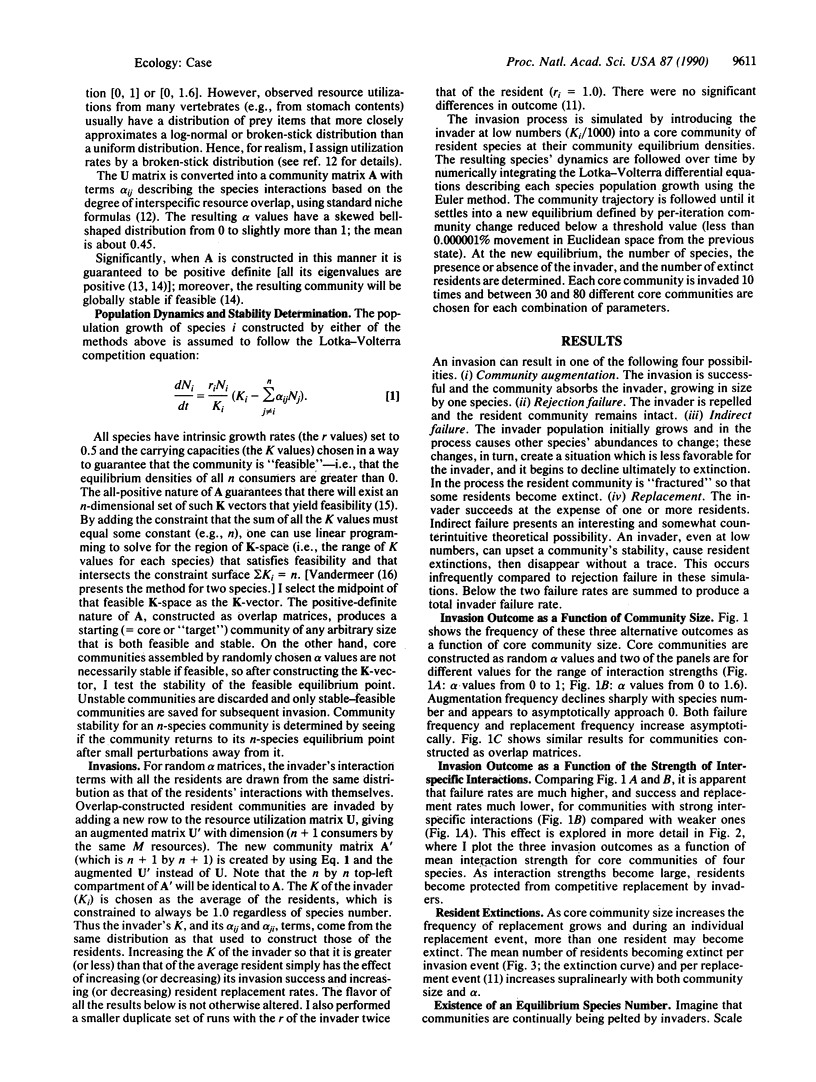
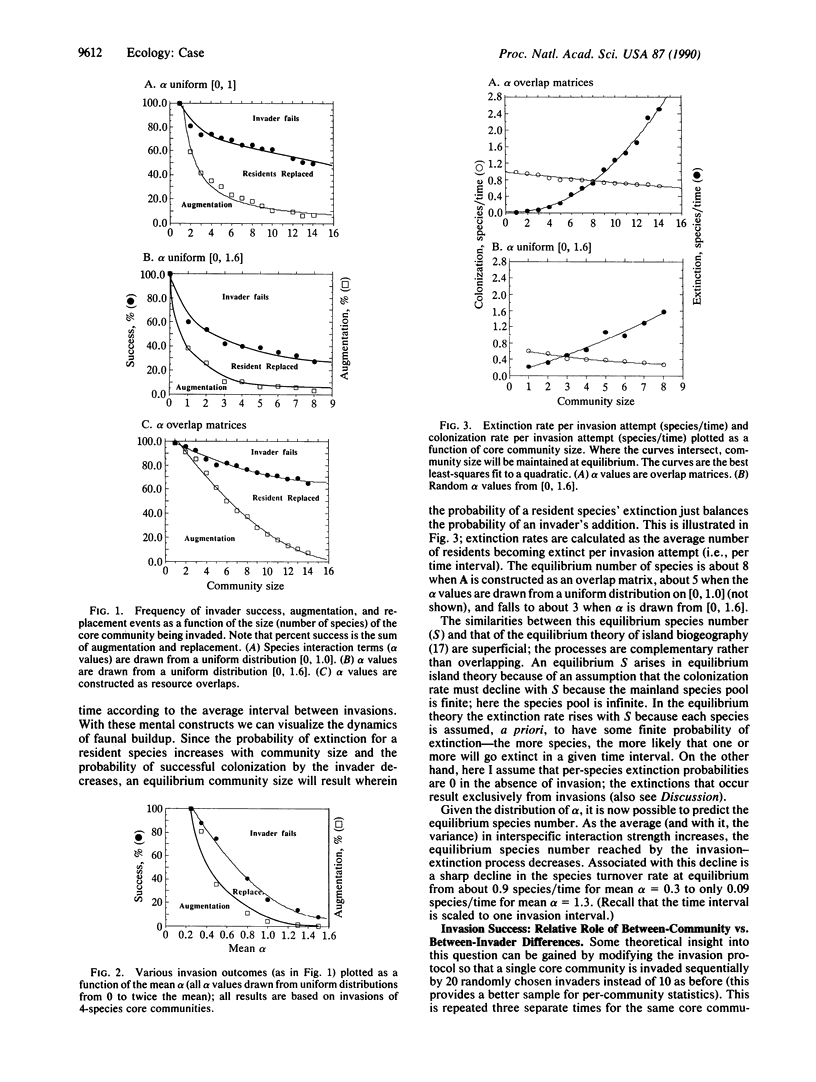
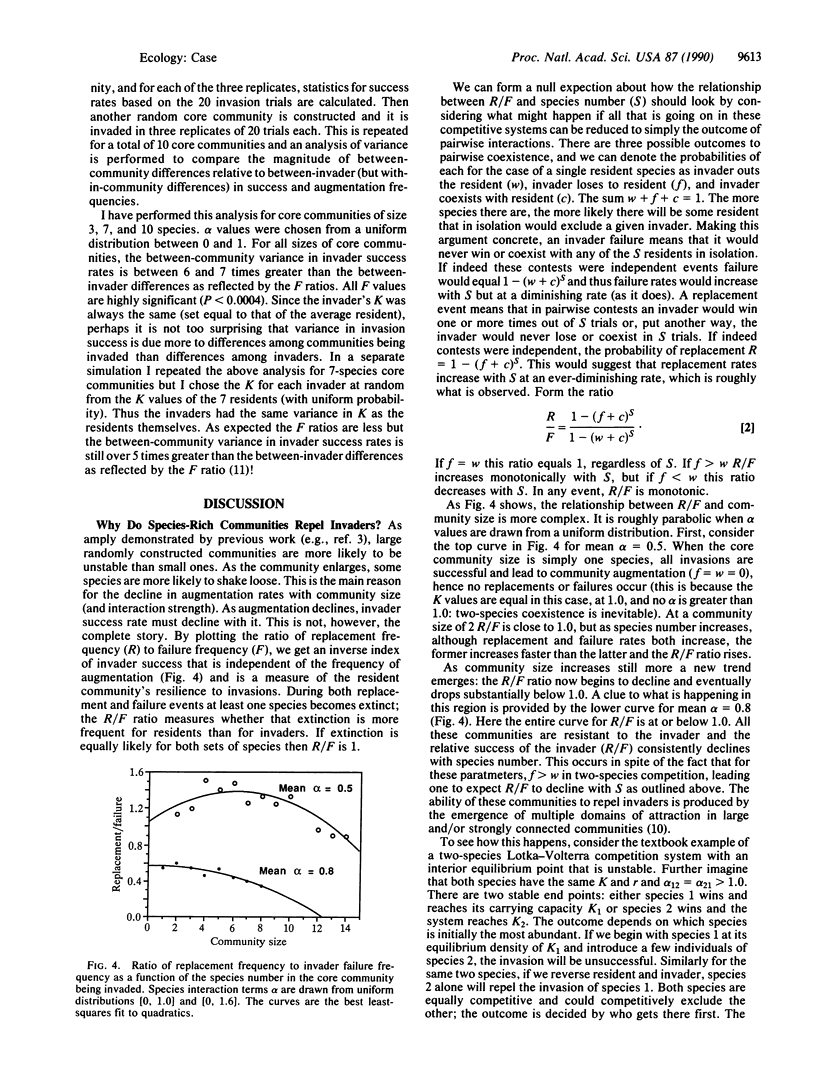
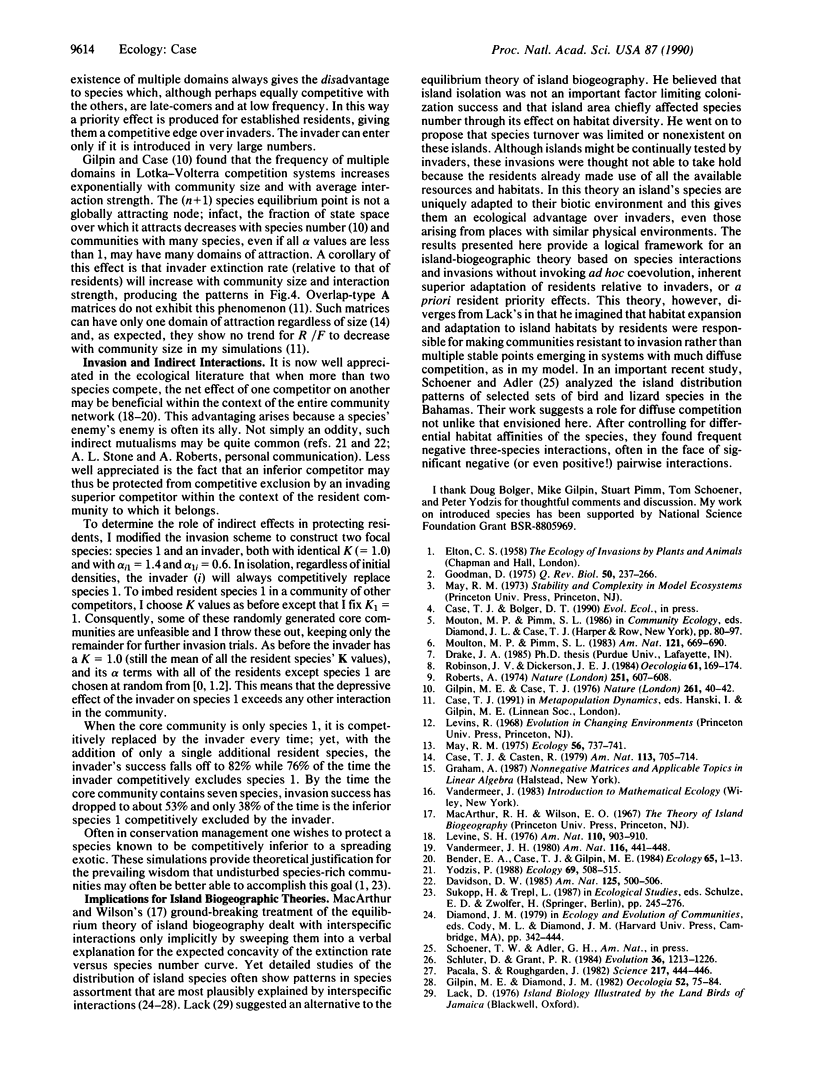
Selected References
These references are in PubMed. This may not be the complete list of references from this article.
- Gilpin M. E., Case T. J. Multiple domains of attraction in competition communities. Nature. 1976 May 6;261(5555):40–42. doi: 10.1038/261040a0. [DOI] [PubMed] [Google Scholar]
- Pacala S., Roughgarden J. Resource partitioning and interspecific competition in two two-species insular anolis lizard communities. Science. 1982 Jul 30;217(4558):444–446. doi: 10.1126/science.217.4558.444. [DOI] [PubMed] [Google Scholar]


